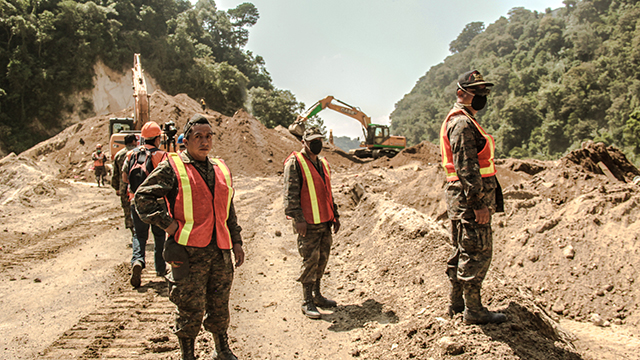
It was 9:30 pm on Thursday, October 1, 2015, when a huge landslide, triggered by heavy rains, completely buried hundreds of homes and families in the village of El Cambray II in Santa Catarina Pinula, located about 30 miles outside of Guatemala City, Guatemala.
It has been weeks since the rescue efforts began, and the National Coordinator for Disaster Reduction, CONRED, estimates the number killed to date amounts to 280. There are 70 still missing, while 472 people have been affected and 445 have been evacuated.
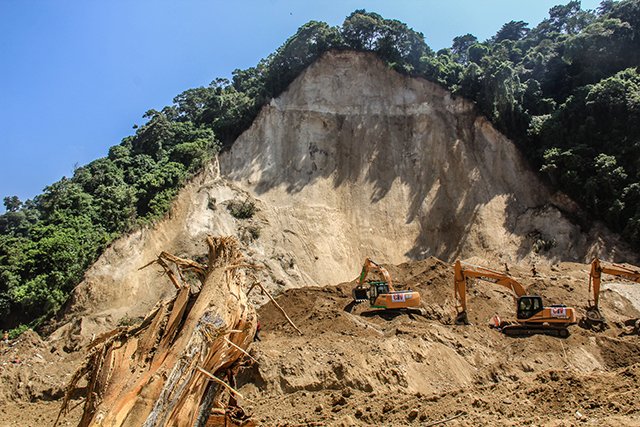 Image of rock collapsed by heavy rains on the night of October 1, 2015. (Photo: Juan Haro)
Image of rock collapsed by heavy rains on the night of October 1, 2015. (Photo: Juan Haro)
“It is somewhat difficult to believe, but the recovery of bodies after almost two weeks does not exist,” said volunteer fire department spokesman Mario Cruz. He said that, “due to the state of putrefaction of the bodies and the risk of disease transmission, plus the continuous earthmoving, it results in too much risk to enter the place for our rescuers.” After 13 days of work, CONRED has determined that the search for victims in El Cambray II should stop.
The access of journalists to the site of the landslide became only possible during the lunch break. The machines ceased their activity and only the sound of 15 howling dogs that remain alive in and around the rubble remained.
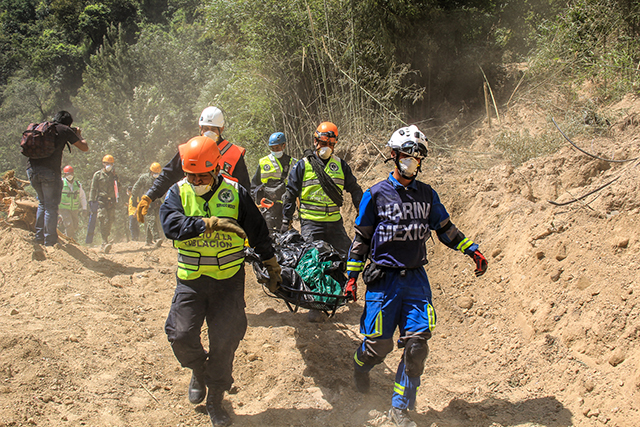 Members of the Mexican Navy transport to the morgue the remains of bodies found. (Photo: Juan Haro)
Members of the Mexican Navy transport to the morgue the remains of bodies found. (Photo: Juan Haro)
The provisional morgue next to the posts of the National Civil Police and the Guatemalan Army emits unbearable stench as a result of the heat and the decaying state of bodies. Meanwhile, the National Institute of Forensic Sciences of Guatemala requests through social networks the urgency of ice to preserve the bodies found.
Bulldozers and heavy machinery have collected more than 45,000 cubic meters of sand mixed with personal belongings, clothing, toys, wrecked cars, cables, iron, etc. Four volunteers closely accompany each machine to search the bodies through exhaustive supervision.
Life in Santa Catarina Pinula
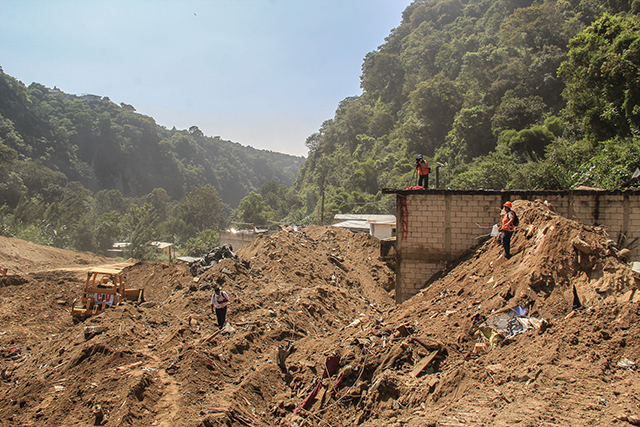 Around 73 houses were completely buried by the landslide. (Photo: Juan Haro)
Around 73 houses were completely buried by the landslide. (Photo: Juan Haro)
On the outskirts of El Cambray II lies the town of Santa Catarina Pinula. Life in the village is surprisingly very quiet, which contrasts with the constant presence of humanitarian personnel or media today. The environment is shocking to the eyes of an outsider. Doctors Without Borders, Mayan Families, the Red Cross, various resident associations and other organizations from around the country have come to deliver medicine, food, clothing and other supplies in the areas of need.
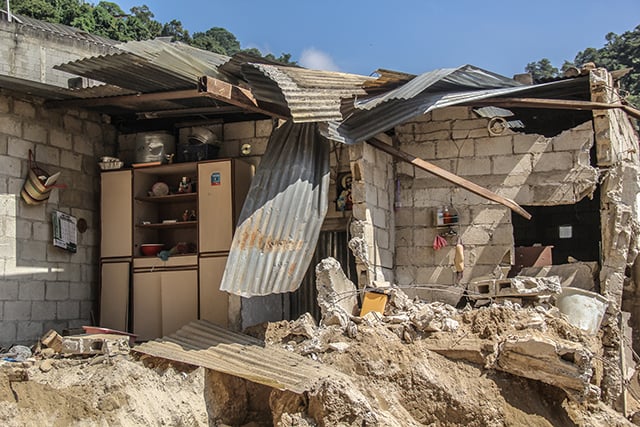 One of the many ruined houses. Approximately 300 families were affected by the flood. (Photo: Juan Haro)
One of the many ruined houses. Approximately 300 families were affected by the flood. (Photo: Juan Haro)
Jorge Augusto Perez, 40, and hails from Santa Catarina Pinula. He has been in the area since the dawn of the avalanche. “We are still heavy-hearted and hurt. There are many people who have been rescued and they continue pulling bodies down there. Personally, I shed tears as a Guatemalan, but I am lucky to be alive,” he says with evident emotion in his words. The municipal shelter embraces the affected families, from babies to elderly, to receive psychological support among other cares and necessities.
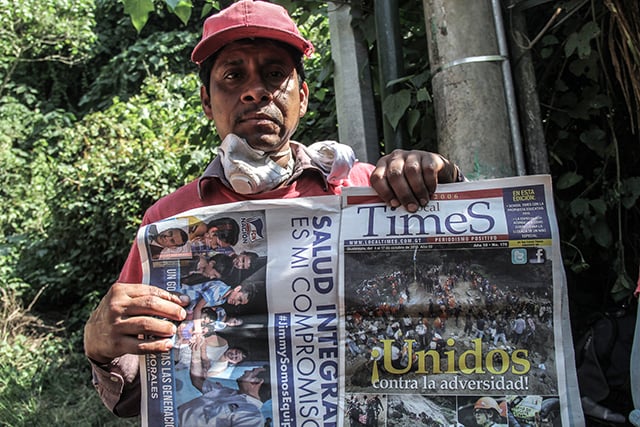 Workers of the municipality of Santa Catarina Pinula highlight the union of Guatemalans during the tragedy of El Cambray 2. (Photo: Juan Haro)
Workers of the municipality of Santa Catarina Pinula highlight the union of Guatemalans during the tragedy of El Cambray 2. (Photo: Juan Haro)
Martinez Rocael has been the ice cream vendor in town for years. His job allows him to get to know many of the neighbors in various parts. “Last week I went to the funeral of six affected children and the parents showed me their pictures; then I realized they were my clients. I’m still shaken,” he affirms.
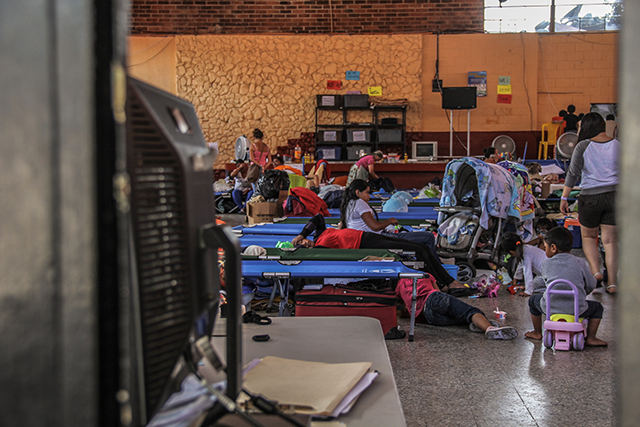 The administration of Santa Catarina Pinula enabled temporary shelters for residents and families of neighborhood affected. (Photo: Juan Haro)
The administration of Santa Catarina Pinula enabled temporary shelters for residents and families of neighborhood affected. (Photo: Juan Haro)
The distribution of medication is exclusively for the affected neighbors of El Cambray II, which has caused some tension between the people who live outside the area who also come for drug delivery. A group of workers hired by the municipality to clean the place banish the great debate of the tragedy: “This was already warned earlier but the families insisted on staying, neither knew what was coming later…”
CONRED Studies Already Declared Warning in November 2014
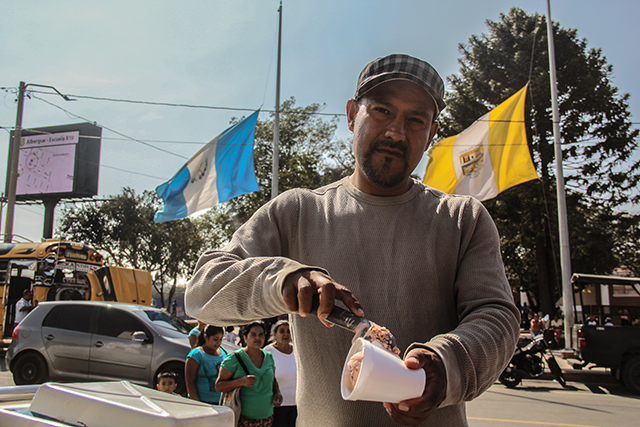 Rocael Martinez sold ice cream to children in the village for years. (Photo: Juan Haro)
Rocael Martinez sold ice cream to children in the village for years. (Photo: Juan Haro)
The neighborhood of El Cambray II was built in an area surrounded by hills 380 feet high and the Pinula River often caused floods during times of heavy rain. The day of the collapse, mud and water made the area soft and vulnerable to the landslide and the ground finally gave way, burying everything in its path.
CONRED anticipated that that community was at risk since 2008, and in November 2014, declared the neighborhood a high-risk area. According to the United Nations, Guatemala is the Latin American country with the highest risk of natural disasters due to the terrain and climate, and this event is a perfect supporting example.
 The streets of Santa Catarina Pinula are daily witnesses of funerals and prayers for the victims. (Photo: Juan Haro)
The streets of Santa Catarina Pinula are daily witnesses of funerals and prayers for the victims. (Photo: Juan Haro)
In a country where the multidimensional poverty is estimated at 70.3 percent, according to the United Nations Economic Commission for Latin America and the Caribbean, the vast majority of the population does not have sufficient resources to acquire land in the safe areas.
Angry, shocked, overwhelmed? Take action: Support independent media.
We’ve borne witness to a chaotic first few months in Trump’s presidency.
Over the last months, each executive order has delivered shock and bewilderment — a core part of a strategy to make the right-wing turn feel inevitable and overwhelming. But, as organizer Sandra Avalos implored us to remember in Truthout last November, “Together, we are more powerful than Trump.”
Indeed, the Trump administration is pushing through executive orders, but — as we’ve reported at Truthout — many are in legal limbo and face court challenges from unions and civil rights groups. Efforts to quash anti-racist teaching and DEI programs are stalled by education faculty, staff, and students refusing to comply. And communities across the country are coming together to raise the alarm on ICE raids, inform neighbors of their civil rights, and protect each other in moving shows of solidarity.
It will be a long fight ahead. And as nonprofit movement media, Truthout plans to be there documenting and uplifting resistance.
As we undertake this life-sustaining work, we appeal for your support. Please, if you find value in what we do, join our community of sustainers by making a monthly or one-time gift.